Acta Paedagogica Vilnensia ISSN 1392-5016 eISSN 1648-665X
2023, vol. 50, pp. 143–158 DOI: https://doi.org/10.15388/ActPaed.2023.50.9
A Diagnostic Analysis of Observational Sketching: Examples from the University of Latvia
Māra Urdziņa-Deruma
University of Latvia, Faculty of Education,
Psychology and Art,
Scientific Institute of Pedagogy
mara.urdzina-deruma@lu.lv
Austra Celmiņa-Ķeirāne
University of Latvia, Faculty of Education,
Psychology and Art,
austra.celmina-keirane@lu.lv
Austra Avotiņa
University of Latvia, Faculty of Education,
Psychology and Art,
Scientific Institute of Pedagogy
austra.avotina@lu.lv
Inguna Karlsone
University of Latvia, Faculty of Education,
Psychology and Art,
inguna.karlsone@lu.lv
Abstract. The importance of freehand sketching is being updated and revised at a time when sketching by hand is, in many cases, being replaced by sketching with digital technologies. In addition, in Latvia, since the reform of the general education curriculum, sketching has been included in the new primary education curriculum, which requires primary school teachers to have experience and understanding of sketching. Freehand sketching is also part of the curriculum for future designers’ education. Researchers at the University of Latvia developed a task, criteria, and a description of the assessment levels (rubric) for sketching from an image to assess the initial preparedness and observational sketching skills of students on design and primary school education teachers’ programmes. The conclusion was that students’ sketching skills could be developed and extended by encouraging the use of different technical approaches and means of expression, as well as by practising the accuracy of observation.
Keywords: criteria, designer education, rubrics, sketches, teacher education
Stebėjimo eskizų diagnostinė analizė: Latvijos universiteto pavyzdžiai
Santrauka. Eskizų piešimas laisva ranka šiandien įgyja naują prasmę, nes toks piešimas daugeliu atvejų pakeičiamas eskizavimu naudojant skaitmenines technologijas. Be to, Latvijoje po bendrojo ugdymo turinio reformos eskizavimas įtrauktas į naują pradinio ugdymo programą, todėl pradinių klasių mokytojai privalo turėti eskizavimo patirties ir supratimo apie jį. Eskizų piešimas laisva ranka taip pat yra būsimų dizainerių ugdymo programos dalis. Siekdami įvertinti studijuojančių dizaino ir pradinio ugdymo mokytojų rengimo programas studentų pirminį pasirengimą ir eskizavimo stebint įgūdžius, Latvijos universiteto mokslininkai parengė eskizavimo iš paveikslėlio užduotį, kriterijus ir vertinimo lygių aprašą (rubriką). Tyrimo išvada ta, kad studentų eskizavimo įgūdžius galima plėsti ir lavinti skatinant juos naudoti įvairius techninius metodus ir išraiškos priemones stebėjimo tikslumui lavinti.
Pagrindiniai žodžiai: kriterijai, dizainerių rengimas, rubrikos, eskizai, mokytojų rengimas
__________
Acknowledgments. This work was supported by the University of Latvia under Grant No ZD2010/AZ22, the research project “Human, technologies and quality of education”.
Received: 22/11/2022. Accepted: 01/02/2023
Copyright © Māra Urdziņa-Deruma, Austra Celmiņa-Ķeirāne, Austra Avotiņa, Inguna Karlsone, 2023. Published by Vilnius University Press. This is an Open Access article distributed under the terms of the Creative Commons Attribution Licence (CC BY), which permits unrestricted use, distribution, and reproduction in any medium, provided the original author and source are credited.
Introduction: Observational sketching
Technology is increasingly entering the study and learning process, and sketches are among the objects now being created using digital technology. Several researchers emphasise the importance of hand-drawn sketches, pointing out that freehand sketching has cognitive benefits that cannot be replaced by sketching with digital devices (see, e.g., Goldschmidt, 2017; Moreira da Silva, 2020). Sketching interacts with mental imagery and can therefore be said to be an internal representation (Goldschmidt, 2017).
Sketching can also be seen as an aid to thinking, as hand-made sketches are easy to revise and correct (Goldschmidt, 2014). Sketching by hand connects thinking with action, supporting problem-solving and critical analysis in the design process (Moreira da Silva, 2020). Looking at one’s own drawings can reveal many interpretations that differ from the original (Oh, Gross, & Do, 2004).
Observational sketches have been singled out as one of the most important types of sketches that are essential for the education and creative practice of both artists and designers. “Observation sketching [relies] on the repeated refreshing of overt attention to an external image, whereas sketching from memory relies on the generation and manipulation [of] images from the designer’s abstract world” (Thurlow, Ford, & Hudson, 2019, p. 481).
Sketches as the result of observation and sketches as the visualisation of an idea are closely related. Observation is often at the heart of a creative idea and is used to create a work of art or a design product. Simblet (2004, p. 13) calls sketch drawings “annotated investigations into the mechanisms of nature and of an idea”, while Fava (2011) points out that observational drawing can be a tool for visual thinking and analytical learning and uses all cognitive skills. This is manifested in observing the object, visualising the drawing‘s proportions, balancing shapes, finding and correcting errors, and completing the drawing (starting afresh to take the corrected errors into account if necessary). The viewer perceives details in observational sketching that otherwise go unnoticed (Hobart, 2005).
Hobart (2005) recommends the use of different types of pencils, paper, and watercolours in observational sketching. He suggests starting with a 3-minute contour drawing, then continuing with blind contour drawing (drawing without taking your hand off the paper). Leimanis (2021) recommends focusing on the main shapes, simplifying them, and checking the main proportions. She also pays great attention to creating mood and expression.
Omwami, Lahti, & Seitamaa-Hakkarainen (2020) investigated how fashion designers sketch garments using nature photographs as inspiration. Cheney and McAllister (2013) also demonstrate how nature observations can serve as a source of inspiration for textile design, pointing out that the design process often starts with observational research. They recommend that observations should be recorded as accurately as possible as they can determine the future direction of a project. Moreover, Kinard (2009) and Meech (2009) advise using sketchbooks to draw or post sketches, taking notes and using a “window tool” or “window template”. Kinard recommends both sketching landscapes in nature and finding images of landscapes in magazines and books, as well as artworks, while Meech recommends sketching still lifes, cityscapes, people and animals in addition to landscapes and artworks.
Sketch evaluation criteria
Over the last 20 years, various researchers have proposed different criteria for evaluating sketches. It should be noted that this paper focuses only on evaluating the result of sketching (the sketch) and not on analysing sketching as a process. Thus, the focus of this section is on those studies that address aspects of the evaluation of the creative work product.
The criteria for evaluating observational sketches should be derived from the purpose and type of sketching. Some of the potential criteria have already been included in researchers’ definitions of sketches. For example, Haanstra, Damen, Groenendijk, & van Boxtel’s evaluation of tools used in arts education shows that the most frequently used criteria for evaluating products in the visual arts are “elements and principles of design, technical use of media, concept, and meaning” (2015, p. 416). Since the object of this study is observational sketches, two of these criteria – concept and meaning – are not fully applicable and are not used.
Yang and Cham (2007) distinguish criteria for evaluating sketches that depend on the specific sketching task. The main criteria are correspondence to reality, respect for proportions, respect for perspective, and detail. Pistone identifies four criteria for evaluating a particular sketching task (inspired by a studied work of art): “(1) skilful use of value contrast, (2) careful consideration of the whole compositional space, (3) effective use of line, (4) hand must be the main focus” (2002, p. 30).
According to Fava (2011), a range of cognitive objectives and all levels of cognitive skills can be evident in a single observed drawing because it is both about knowing the structure and seeing the difference between what one knows and what one sees. A line must be creatively chosen to be used as a contour line or texture. The sketch could, therefore, be assessed based on how sophisticated its design is, not by the accuracy of its representation or by its contribution to any other purpose, such as collecting visual information for a design project.
In addition, several researchers have developed detailed criteria for evaluating sketches of design products. Although such sketches differ from observational sketches, their evaluation criteria are also considered in this study.
When designing, designers think about two aspects: embodiment and rationale. The embodiment includes form, shape, configuration, pattern, dimension, materials, colour, and texture. The rationale includes values, the relationship between requirements and constraints, desires, aspirations, etc. (Goldschmidt, 2017). Sketching skills in a design context are characterised by two main components: dexterity and familiarity with orthogonal projection systems (Goldschmidt, 2003).
Kudrowitz, Te, & Wallace evaluate the quality of product sketches according to three criteria: “(1) a combination of mastery in line-work execution, (2) the correctness of perspective, and (3) appropriateness or realism of proportions” (2012, p. 270). A shaky, broken line is not of high quality, while constructive lines are not distracting. The perspective must be correctly constructed, and the proportions must correspond to the realistic proportions of the areas.
The criteria developed by Sevier et al. (2017) for evaluating the design of product sketches (including the desired environment around the product), considering the designer’s intention, are the following: complexity criteria: shading, 3D, annotation, scale, alternative views/configuration, variable line weight, kinetic, texture; and clarity criteria: explaining who, what, when, where, why, and how.
Syrjäläinen and Seitamaa-Hakkarainen (2014) identify two main criteria for evaluating sketches: the visual detail of the sketches and the detail of the sketch notes. Furusho (2016) recommends assessing the technical aspects and impression of pencil drawings from five compositional perspectives: shape, lightness/darkness, colour and texture, space and stereoscopic effect, and presence, the volume of the work and completeness. Additionally, Richards (2013) points out that great sketches are characterised by freshness and spontaneity.
Researchers have also tried to develop different scoring systems and rubrics for sketches. For example, Sung, Kelley, & Han (2019) created a design quality rubric with four criteria (conciseness, concreteness, accuracy, and practicality) using a 5-point Likert scale, where 1 is “not evident” and 5 is “excellent”, to evaluate 4th-grade students’ sketches.
Summarising the above studies’ proposals for evaluating sketches, it can be concluded that, like other visual works, sketches are evaluated on the use of visual elements, principles of composition and perspective, technical performance, and clarity of concept.
Practical study
Learning to sketch requires a structured approach, and this applies to all levels of education from primary school onwards. Sung et al. (2019) show that the structured learning of sketching leads to more successful outcomes at primary school. In turn, Thurlow et al. (2019) show that a focused approach to sketching learning is also needed at university level, which includes both lecturers’ and students’ awareness of the importance of sketching, targeted observation tasks that benefit a specific design discipline, and more structuring of the sketching learning process.
To introduce a clear structure to the learning process, tasks should be designed so that skills and competence develop gradually, starting with the simplest. The first step is observational sketching: the student should attempt to visualise the object they see, using their knowledge of the structure of objects and means of visual expression and all the technical tools at their disposal. Representing the visible object involves framing and choosing a point of view (except where this is already set in the assignment conditions), analysing the proportions and shape of the object, constructing perspective, assessing tonal relationships, and reflecting colour and texture. As observational sketching is often time-limited, all decisions about what and how to represent must be made very quickly and without focusing on less important details.
At the University of Latvia, sketching is a required component of several undergraduate programmes (e.g., the Art, Teacher of Design and Technologies, and Teacher of Primary School Education professional bachelor study programmes). The aim of this study was therefore to develop a methodology and criteria for the analytical evaluation of observational sketches, which could also be used (depending on the task) for the qualitative evaluation of sketches at different educational levels. A further objective was to assess students’ overall sketching proficiency, and observational sketching was chosen as the most appropriate method for this task. It is planned that the results of the study will be used to design various practical sketching tasks to develop students’ sketching skills.
Observational sketches can be divided into groups depending on the object being sketched. One group is artwork samples, which can be studied for their compositional structure and the visual elements used. Various sources can be used to find design ideas, one of which is nature and the natural landscape. To successfully use a source of inspiration, it is important to observe and perceive the shape, proportions, tonal relationships, emphasis, colour combination and other visual features of the object being observed, i.e., to use observational sketching.
In this study, reproductions of landscapes painted by Latvian artists were chosen as sketching objects (identified as images in Table 1), and characteristic river scenes that students could identify with Latvian nature were selected. The choice of a common theme and motif for the paintings was linked to the need to compare and analyse the sketches according to certain criteria. Sketching while observing a work of art (specifically a painting) could be the first and easiest step in learning how to sketch because several things are already defined for the sketcher: a motif and a point of view have been chosen, a three-dimensional environment has been transformed into a two-dimensional image, perspective has been constructed, the proportions of the objects have been determined, and tonal and colour relationships have been resolved.
Table 1. Criteria and levels of sketch analysis
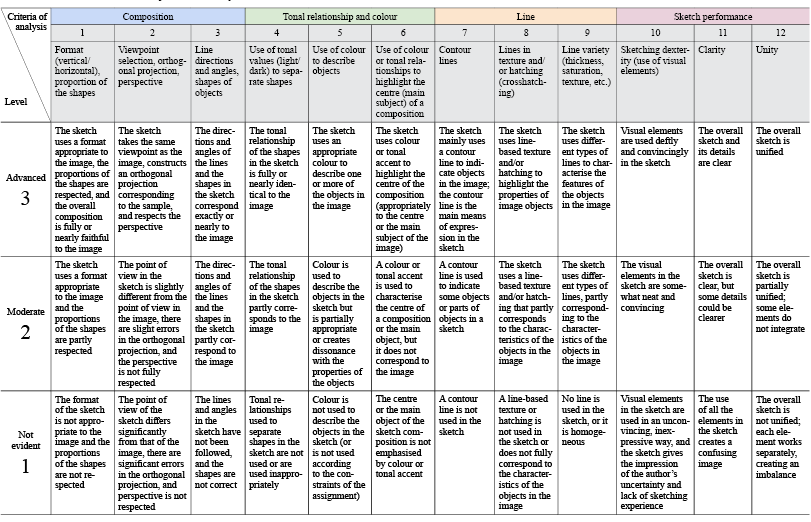
A total of 20 reproductions of paintings were selected, as this number corresponds to the number of students in the two groups (on average; see Methodology section), and the rationale for this approach was to allow each student to sketch a different work of art. This was necessary for the additional task of identifying the sketches from the given samples. However, this task is not described in detail in this paper.
Methodology
Several research questions were posed to achieve the objectives of the study: What should the criteria for evaluating observational sketches be? Which criteria do students score higher on, and which do they score lower on? Is there a statistically significant difference between the two groups of participants? If so, what determines this? Which means of artistic expression do students use more?
The study was carried out using two groups of bachelor-level students. The first group consisted of 22 1st-year students on the Teacher of Primary School Education programme studying Design and Technology Teaching Methodology (hereafter – Group 1). The second group consisted of 1st-, 2nd- and 3rd-year students (future graphic and interior designers) on the Art programme studying Design Composition and Drawing (hereafter – Group 2). Students’ participation in the study was voluntary.
Sketches of Group 2 were not analysed separately by year of study, as sketching has not been included as a compulsory component of the curriculum so far, so the results did not differ significantly. In total, 59 students participated in Group 2. They did not complete the task simultaneously but instead in smaller groups. Due to the limitations of the Covid-19 pandemic, Group 1 studied remotely via an online platform, while Group 2 studied in person.
Rubrics are one of the most commonly used scoring tools in the visual arts (Haanstra et al., 2015). Nowadays, a variety of rubrics are used in both practice and research. Dawson (2017) identifies 14 design elements that distinguish rubrics from each other. When designing rubrics, it is advisable to pay attention to quality and to describe it in a way that allows students to learn as they explore the rubric. It is recommended that rubrics do not include meeting the specific requirements of the task so that students do not focus on scoring but on learning (Brookhart & Chen, 2015). It is also important to consider reliability (which is determined by the clarity of the rubric), rater preparation, and validity when creating rubrics (Brookhart & Chen, 2015; Dawson, 2017). Reddy and Andrade (2010) conclude that rubrics can identify areas for improvement on higher education courses and programmes, and this is a challenge that this study aims to meet.
Four main criteria were developed for the analysis of the sketches: ‘Composition’, ‘Tonal relationship and colour’, ‘Line’, and ‘Sketch performance’, each of which had three sub-criteria. For each sub-criterion, a rubric was developed with a 3-point system, where 1 is “not evident” (the visual element or principle defined in the criterion is not detectable in the sketch or its use does not fully correspond to the sample image), 2 is “moderate” (the visual element or principle defined in the criterion is partially used in the sketch), and 3 is “advanced” (the visual element or principle defined in the criterion is fully and reasonably used, achieving a consistent composition and dexterity in the sketch).
The first three criteria are designed to assess the visual elements and compositional principles used in the sketches. They are based on the findings collected by several researchers (see, e.g., Pistone, 2002; Yang & Cham, 2007; Kudrowitz et al., 2012; Furusho, 2016; Goldschmidt, 2017; Sevier et al., 2017). The fourth criterion, ‘Sketch performance’, was designed to analyse the coherence of all visual elements (sub-criteria 4–9) into a coherent image and their convincing and agile use. The analysis did not include a separate criterion for the technical execution of the sketches and the choice of tools, but it is included as a component in the ‘Sketch performance’ criterion. The tools chosen have an impact on the dexterity, clarity and coherence of the sketch’s overall image.
An initial version of the criteria and rubrics was pilot-tested by assessing several student sketches and discussed several times within the research team to ensure that the rubrics were characterised by reliability and validity until a final version was developed (see Table 1). The sketch assessment rubric was then pilot-tested by five prospective design and technologies teachers, who checked if the rubrics were clear and understandable for everyone and if the sketches could be assessed against them. Twenty-five sketches were randomly selected out of 81.
The criteria were originally intended to diagnose sketching skills in higher education. However, they have been developed to be sufficiently universal to be used in general primary and secondary education and can be adapted to the needs of qualitative assessment.
Procedure
Before the study, students were familiarised with the study and asked for their informed consent. All invited students agreed to participate in the study.
Twenty reproductions of landscapes were pre-selected and given numbers. Each student wrote down a number and received the landscape reproduction corresponding to this number.
Students were tasked with sketching the landscape on A5 white paper, observing the reproduction, noting the most characteristic features, and highlighting what they considered the most essential elements. The sketching could be done with a graphite pencil, a black marker of any thickness, and one coloured drawing tool (pencil, crayon, felt-tip pen, etc.) of their choice. Students could use only one of these tools or a combination of them. This limitation was set for three reasons: they are accessible tools that do not require prior preparation, predefined tools made the choice easier and allowed students to concentrate on other parts of the sketching process, and the range of tools was sufficient to analyse sketches according to all the criteria set in the study.
Group 1 completed the task remotely and received the landscape reproductions digitally. The time allotted for sketching was 5 minutes, after which the work had to be photographed and uploaded to the e-studios website. The sketches were downloaded, coded and linked to a reproduction of the artwork for easy comparison for the subsequent analysis of the works.
Group 2 completed the task in person, receiving digital reproductions of the artwork on a computer or smartphone. Each student was seated in such a way that it was impossible to see another student’s work so as to avoid interference. The time allotted for sketching was 3 minutes. After completing their sketching, the students’ work was collected, photographed, coded, and matched with the reproductions.
All sketches were analysed according to the criteria and levels developed.
Results
Group 1
Of the four main criteria, the highest overall scores are for ‘Sketch performance’ (M=6.77 [maximum of 9]; SD=1.38) and ‘Line’ (M=6.73; SD=0.86).
When looking at the ‘Line’ sub-criteria, the highest overall score is for ‘Line in texture and/or hatching’ (M=2.36 [maximum of 3]; SD=0.48), which is the highest of all 12 sub-criteria. All sketches corresponded to levels 2 or 3. Therefore, it can be concluded that students used lines with understanding to represent objects in landscapes.
The overall scores are slightly lower for the criteria ‘Contour line’ (M=2.23; SD=0.42) and ‘Line variety’ (M=2.14; SD=0.55). All 22 students used a line as a contour line, and only two did not use line variety.
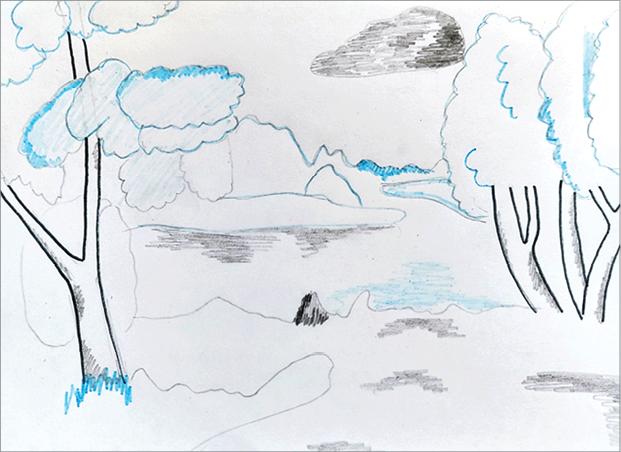
Figure 1. A sketch with the maximum score for the criterion ‘Line’
For the criterion ‘Sketch performance’, the highest score is found in the sub-criterion ‘Unity’ (M=2.32; SD=0.70). However, three students’ sketches were not united as a whole; they obtained only 1 point. The scores were slightly lower for the sub-criteria ‘Sketching dexterity’ (M=2.23; SD=0.42) and ‘Clarity’ (M=2.23; SD=0.52).

Figure 2. A sketch with the maximum score for the criterion ‘Sketch performance’
The ‘Composition’ criterion scored lower overall (M=5.82; SD=1.99) as only four students scored the maximum score (see Figure 3). A comparatively better result was found for the sub-criterion ‘Format, the proportion of shapes’ (M=2.18; SD=0.58), but two students did not use the appropriate format and scored 1 point each.
The sub-criterion ‘Viewpoint selection, orthogonal projection, perspective’ scored lower (M=1.86; SD=0.81). Several students’ sketches showed a discrepancy between the reproduction and the sketch’s viewpoint. In some works, the regularity of perspective was not respected. For the sub-criterion ‘Line directions and angles, shapes of objects’ (M=1.77; SD=0.73), many students (9 out of 22) scored 1 point because they did not follow the lines and angles of the original, and therefore the shapes of the areas were not appropriate.
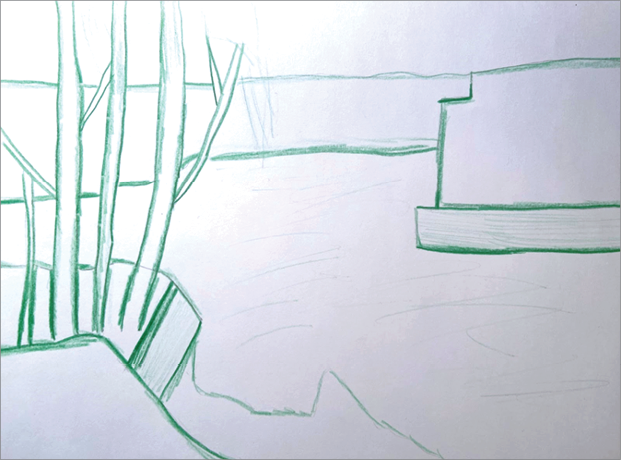
Figure 3. A sketch with the maximum score for the criterion ‘Composition’
The ‘Tonal relationship and colour’ criterion has the lowest overall score (M=5.59; SD=0.40). Only one sketch received the maximum score (Figure 4).
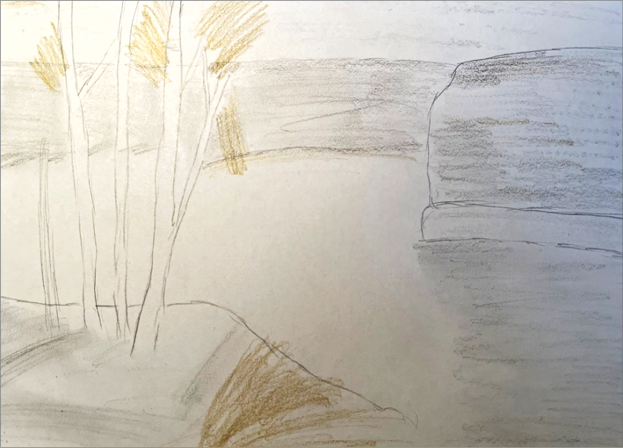
Figure 4. The sketch with the maximum score for the criterion ‘Tonal relationship and colour’
Two students scored 1 point each in the sub-criterion ‘Use of colour or tonal relationships to highlight the centre of a composition’ (M=2.18; SD=0.58) because one used neither colour nor tonal relationships to highlight the centre of the composition, while the other misused both colour and tonal relationships in the reproduction. In the sub-criterion ‘Use of tonal values to separate shapes’ (M=1.73; SD=0.75), ten students’ sketches received 1 point because either tonal relationships were not used or they were misused in the image. There was a similar total score for the sub-criterion ‘Use of colour to describe objects’ (M=1.68; SD=0.63).
It can be concluded that when making observational sketches using a piece of artwork as the object of observation, students skilfully use more varied lines both as contour lines and for texture representation. The sketches are also produced as a coherent work, with relatively neat and explicit representations of the objects.
Students’ observation and representation of shapes, angles, line directions and perspective in reproductions are less skilled than their use of varied lines (both as contour lines and for texture representation). Moreover, they either do not focus on tonal relationships or misuse them.
Group 2
The highest mean score of students in Group 2 was for the criterion ‘Sketch performance’ (M=7.80; SD=1.34), followed by ‘Composition’ (M=7.14; SD=1.43), ‘Line’ (M=6.24; SD=0.91) and ‘Tonal relationship and colour’ (M=5.97; SD=1.69). Looking at the sub-criteria, the two with the highest scores are both from ‘Sketch performance’ – these are ‘Unity’ (M=2.73; SD=0.55) and ‘Sketching dexterity’ (M=2.63; SD=0.55).
In conclusion, the students’ skills in using visual means of expression to create the overall image of the sketch are good, and their previous education and experience allowed them to achieve a certain degree of dexterity and freedom in their sketch.
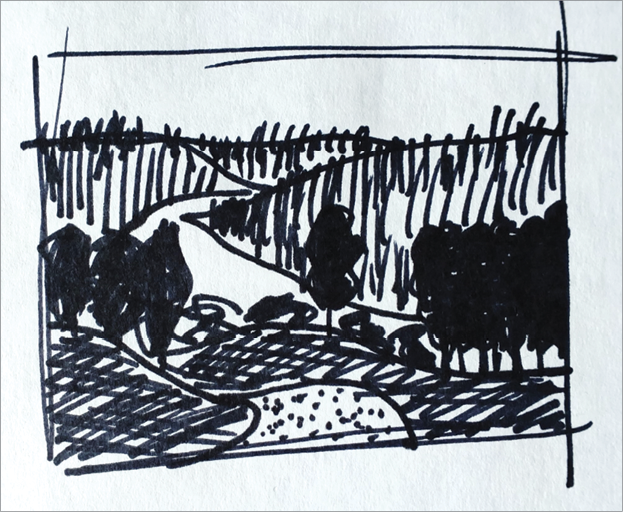
Figure 5. A sketch with the maximum score for the criterion ‘Sketch performance’
Among the ‘Composition’ sub-criteria, similar scores were observed for ‘Viewpoint selection, orthogonal projection, perspective’ (M=2.51; SD=0.59) and ‘Format, the proportion of shapes’ (M=2.42; SD=0.59). At the same time, students paid less attention to the representation of precise line directions and angles and shapes (M=2.20; SD=0.55).
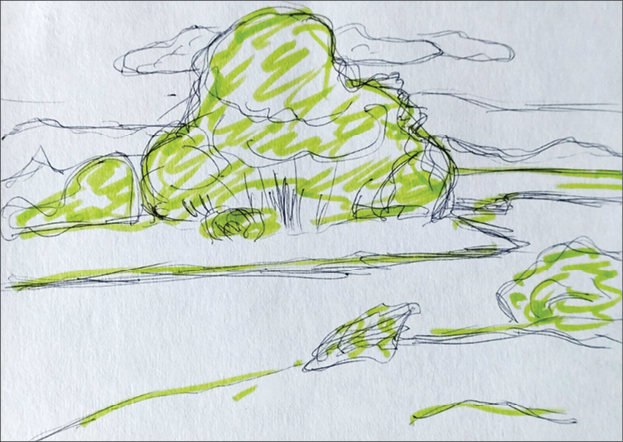
Figure 6. A sketch with the maximum score obtained for the criterion ‘Composition’
For the criterion ‘Line’, all three sub-criteria have similar results: ‘Contour line’ (M=2.07; SD=0.41), ‘Line in texture and/or hatching’ (M=1.97; SD=0.52) and ‘Line variety’ (M=2.20; SD=0.55). Level 2 (Moderate) dominates the sketch analysis, and none of the 59 students scored the maximum. Although lines were used in all sketches, their divisible functions and properties were not fully exploited.
The lowest scores can be observed in the criterion ‘Tonal relationships and colour’, with the lowest being for ‘Use of tonal values to separate shapes’ (M=1.78; SD=0.71), followed by ‘Use of colour to describe objects’ (M=1.97; SD=0.78) and ‘Use of colour or tonal relationships to highlight the centre of a composition’ (M=2.22, SD=0.82).
These results show that students often associate sketching with line drawing and focus on defining objects with lines (mostly contour lines). More than a third of the students (23) did not use tonal relationships to distinguish shapes or misused them for a given image. Although students were allowed to use one colour in the task, one-third did not use this option. Only three students scored the maximum points in this criterion.
Comparing the means of the two groups, it can be concluded that the higher scores are mainly found in Group 2. Only in two sub-criteria (‘Contour line’ and ‘Line in texture and/or hatching’) does Group 1 score higher (see Figure 8). This can be explained by the fact that Group 1 used less colour in their sketching to describe objects. Although sketching has not been emphasised in the study process, the skills acquired by students on the art and design courses influenced their use of expressive media as well as their representation of the proportions of the areas.

Figure 7. A sketch with the maximum score for the criterion ‘Tonal relationship and colour’
The most significant difference in the results of the two groups can be observed in the criterion ‘Composition’ (M=5.81 for Group 1; M=7.14 for Group 2), especially in the sub-criterion ‘Viewpoint selection, orthogonal projection, perspective’. The lowest mean score is in the criterion ‘Tonal relationship and colour’. It can thus be concluded that when setting conditions for sketching, the tasks should be varied and developed to improve students’ skills in this criterion; for example, students could sketch without using a line, only shapes, etc.
When calculating the t-criterion for the means of all sub-criteria, statistically significant differences between the two groups were found in five sub-criteria (tcalc>tcrit=1.990): ‘Viewpoint selection, orthogonal projection, perspective’ (tcalc=3.860), ‘Line in texture and/or hatching’ (tcalc=3.085), ‘Unity’ (tcalc=3.083), ‘Sketching dexterity’ (tcalc=3.057) and ‘Line directions and angles, shapes of objects’ (tcalc=2.825).
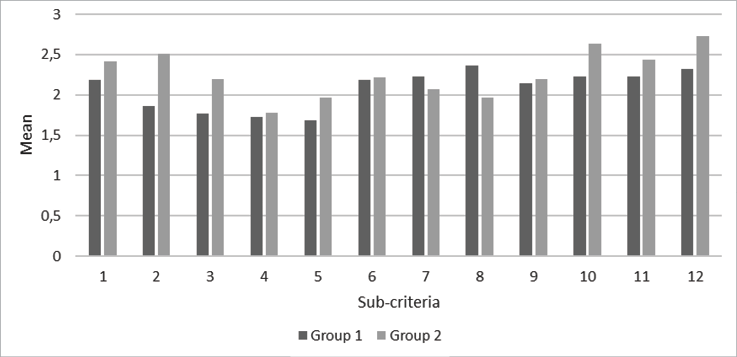
Figure 8. Mean scores for each of the sub-criteria
* See Table 1 for the sub-criterion corresponding to each number
Conclusions
In this study, the criteria used for the analytical evaluation of observational sketches were composition, tonal relationships of areas, use of lines, and sketch performance, for which sub-criteria were also defined. Depending on the task, the rubrics developed can be used for future formative and summative assessments by selecting the appropriate criteria and sub-criteria.
The developed task and the criteria, sub-criteria and corresponding three-level rubrics made it possible to identify and analyse the elements of artistic language used in the students’ observational sketches in terms of proportion, representation of perspective and the overall image of the sketch when the task was carried out both face-to-face and remotely. It was more difficult to control the duration of sketching when it was carried out remotely.
Overall, both groups scored highest in the criterion ‘Sketch performance’ and lowest in ‘Tonal relationships and colour’. Statistically significant differences were found between the two groups in five sub-criteria, with ‘Viewpoint selection, orthogonal projection, perspective’ being the highest, followed by ‘Line in texture and/or hatching’, ‘Unity’, ‘Sketching dexterity’ and ‘Line directions and angles, shapes of objects’.
The results show that students are likelier to use lines as the primary means of expression for sketching. In future study processes, more attention should be paid to the process of sketching itself, particularly the shapes of the areas, the direction of the lines, perspective, tonal relationships and emphasis – in general, the accuracy of the observation and its representation in the sketch. In addition, greater attention should be paid to the variety of means and materials of artistic expression available in sketching. Defining areas by line alone limits the expressive possibilities of students. If students do not pay attention to tonal relationships or colour in their observation sketches, there is a good chance that they will not reflect these in their sketches of design ideas, which means that essential aspects of the sketches remain unrevealed and the design idea is not presented sufficiently clearly.
This study only looked at the criteria for evaluating observational sketching as a product; further research should explore the process of observational sketching, students’ reflections on sketching and attitudinal assessments, and how to plan for student involvement both in the creation of sketch criteria and rubrics appropriate to the task at hand and in self- and peer assessment.
References
Brookhart, S. M., & Chen, F. (2015). The quality and effectiveness of descriptive rubrics. Educational Review, 67(3), 343–368. https://doi.org/10.1080/00131911.2014.929565
Cheney, N., & McAllister, H. (2013). Textile surface manipulation (Textiles handbooks). Bloomsbury Visual Arts.
Dawson, P. (2017). Assessment rubrics: Towards clearer and more replicable design, research and practice. Assessment and Evaluation in Higher Education, 42(3), 347–360. https://doi.org/10.1080/02602938.2015.1111294
Fava, M. (2011). What is the role of observational drawing in contemporary art & design curricula? In E. Norman & N. Seery (Eds.), IDATER Online Conference: Graphicacy & Modelling (pp. 129–141). IDATER.
Furusho, Y. (2016). For the subjective evaluation items of the pencil still drawing evaluation system. https://apiems2016.conf.tw/site/userdata/1087/papers/0352.pdf
Goldschmidt, G. (2017). Manual sketching: Why is it still relevant? In S. Ammon, & R. Capdevila-Werning (Eds.), The active image: Architecture and engineering in the age of modelling (Philosophy of engineering and technology vol. 28) (pp. 77–97). Springer. https://doi.org/10.1007/978-3-319-56466-1_4
Goldschmidt, G. (2014). Modeling the role of sketching in design idea generation. In A. Chakrabarti & L. Blessing (Eds.), An anthology of theories and models of design (pp. 433–450). Springer. https://doi.org/10.1007/978-1-4471-6338-1_21
Goldschmidt, G. (2003). The backtalk of self-generated sketches. Design Issues, 19(1), 72–88. https://www.jstor.org/stable/1512057
Haanstra, F., Damen, M., Groenendijk, T., & van Boxtel, C. (2015). A review of assessment instruments in arts education. In S. Schönmann (Ed.), International yearbook for research in arts education (Vol. 3): The wisdom of the many – Key issues in arts education (p. 413–418). Waxmann.
Hobart, A. (2005). Sketching in nature. The Science Teacher (National Science Teachers Association), 72(1), 30–34. ProQuest.
Kinard, L. (2009). Art + Quilt: Design principles and creativity exercises. Interweave.
Kudrowitz, B., Te, P., & Wallace, D. (2012). The influence of sketch quality on perception of product-idea creativity. Artificial Intelligence for Engineering Design, Analysis and Manufacturing, 26(3), 267–279. https://doi.org/10.1017/S0890060412000145
Leimanis, I. (2021). Sketching perspective. The Crowood Press.
Meech, S. (2009). Connecting art to stitch. Batsford.
Moreira da Silva, A. (2020). Rethinking sketching role in nowadays design process. In F. Rebelo & M. Soares (Eds.), Advances in ergonomics in design: Proceedings of the AHFE 2020 virtual conference on ergonomics in design, July 16–20, 2020, USA (pp. 160–167). Springer. https://doi.org/10.1007/978-3-030-51038-1_23
Oh, Y., Gross, M. D., & Do, E. (2004). Critiquing freehand sketching: A computational tool for design evaluation. In J. S. Gero & T. Knight (Eds.), Visual and spatial reasoning in design III (pp. 105–120). Key Centre of Design Computing and Cognition, University of Sydney.
Omwami, A., Lahti, H. & Seitamaa-Hakkarainen, P. (2020). The variation of the idea development process in apparel design: a multiple case study. International Journal of Fashion Design, Technology and Education, 13(3), 341–351. https://doi.org/10.1080/17543266.2020.1817573
Pistone, N. (2002). Envisioning arts assessment: A process guide for assessing arts education in school districts and states. Arts Education Partnership and the Council of Chief State School Officers.
Reddy, Y. M., & Andrade, H. (2010). A review of rubric use in higher education. Assessment & Evaluation in Higher Education, 35(4), 435–448. https://doi.org/10.1080/02602930902862859
Richards, J. (2013). Freehand drawing and discovery: Urban sketching and concept drawing for designers. John Wiley & Sons.
Sevier, D. C., Jablokow, K., McKilligan, S., Daly, S. R., Baker, I. N., & Silk, E. M. (2017). Towards the development of an elaboration metric for concept sketches. In Proceedings of the ASME 2017 international design engineering technical conferences and computers and information in engineering conference (V003T04A006). ASME. https://doi.org/10.1115/DETC2017-67375
Simblet, S. (2004). The drawing book: An innovative, practical approach to drawing the world around you. Dorling Kindersley.
Sung, E., Kelley, T. R., & Han, J. (2019). Influence of sketching instruction on elementary students’ design cognition: a study of three sketching approaches. Journal of Engineering Design, 30(6), 199–226. https://doi.org/10.1080/09544828.2019.1617413
Syrjäläinen, E., & Seitamaa-Hakkarainen, P. (2014). The quality of design in 9th grade pupils’ design-and-make assignments in craft education. Design and Technology Education: An International Journal, 19(2), 30–39.
Thurlow, L., Ford, P., & Hudson, G. (2019). Skirting the sketch: An analysis of sketch inhibition within contemporary design higher education. The International Journal of Art & Design Education, 38(2), 478–491. https://doi.org/10.1111/jade.12207
Yang, M., & Cham, J. (2007). An analysis of sketching skill and its role in early stage engineering design. Journal of Mechanical Design, 129(5), 476–482. https://doi.org/10.1115/1.2712214








